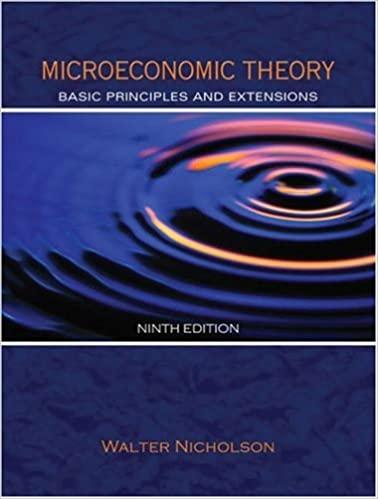15.3 The perfectly competitive videotape copying industry is composed of many firms that can copy five tapes
Question:
15.3 The perfectly competitive videotape copying industry is composed of many firms that can copy five tapes per day at an average cost of $10 per tape. Each firm must also pay a royalty to film studios, and the per-film royalty rate (r) is an increasing function of total industry output (Q) given by r .002Q.
a. Assuming the industry is in long-run equilibrium, what will be the equilibrium price and quantity of copied tapes? How many tape firms will there be? What will the per-film royalty rate be?
b. Suppose demand for copied tapes increases to Q 1,600 50P.
Now, what is the long-run equilibrium price and quantity for copied tapes? How many tape firms are there? What is the per-film royalty rate?
c. Graph these long-run equilibria in the tape market and calculate the increase in producer surplus between the situations described in parts
(a) and (b).
d. Show that the increase in producer surplus is precisely equal to the increase in royalties paid as Q expands incrementally from its level in part
(b) to its level in part (c).
Step by Step Answer:

Microeconomic Theory Basic Principles And Extensions
ISBN: 9780324270860
9th Edition
Authors: Walter Nicholson






